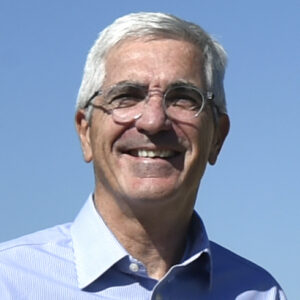Writer: Joshua Andino
 4 min read July 2023 — With infrastructure projects across the country receiving millions in federal funding as a result of legislation passed over the last two years, Invest: spoke to leaders across Tampa Bay on what issues and expansions they currently face.
4 min read July 2023 — With infrastructure projects across the country receiving millions in federal funding as a result of legislation passed over the last two years, Invest: spoke to leaders across Tampa Bay on what issues and expansions they currently face.
Across Tampa Bay, local officials in the city proper and across the southwest Florida region have vied for federal dollars meant for infrastructure improvements, upgrades and initial funding to get projects off the ground and shovels into it. WIth varying degrees of success, the City of Tampa has secured millions of federal dollars for safer street projects leading into Downtown, as well as upgrades to the city port.
Over in St. Petersburg, the SunRunner BRT system, while its development preceded the Bipartisan Infrastructure Bill passed in 2021 that is responsible for the current wave of funding, has proven itself a resounding success. Operating on semi-dedicated lanes and having increasingly gained ridership since its debut earlier in 2022, St. Pete is working on expanding the system with new stops in its downtown and additional buses for its fleet.
On the bay’s southern end, SeaPort Manatee has received a $12-million federal investment of its own, and is in the midst of a container yard facility expansion. By air, Sarasota-Bradenton International Airport is similarly working on its own terminal facility expansion.
With so many projects and systems across the region, Invest: spoke to infrastructure and transportation leaders to see what they are working on, the challenges they face, and how they are each navigating today’s environment.
How do you intend to meet demand as the region grows?

Rick Piccolo, President & CEO, Sarasota-Bradenton International Airport : We have about $282 million worth of projects either in planning or construction over the next five years. The biggest project in the pipeline is our new five-gate terminal, which is supposed to open by December 2024. That expansion is just designed to handle the existing growth we have rather than trying to anticipate future growth. While growth is always positive, we are becoming more constrained as we lack the capacity due to such fast expansion. We will easily exceed 4 million passengers this year.
 Carlos Buqueras, President & CEO, SeaPort Manatee : We want to grow in every direction that’s water- or maritime-related. The agenda includes cruise and container yard development, with additional paving. The plan also calls for building warehouses and maintaining the board’s depth and draft to meet Tampa Bay standards to accommodate the growth and demand of the port.
Carlos Buqueras, President & CEO, SeaPort Manatee : We want to grow in every direction that’s water- or maritime-related. The agenda includes cruise and container yard development, with additional paving. The plan also calls for building warehouses and maintaining the board’s depth and draft to meet Tampa Bay standards to accommodate the growth and demand of the port.
 Thomas Jewsbury, Airport Director, St. Pete-Clearwater International Airport : It is through our Capital Improvement program. We plan five years in advance for that, which is necessary as we see inflation in materials and resources needed for infrastructure improvements and the expansion we have planned. We also have to balance all that while being responsible enough to predict inflation costs.
Thomas Jewsbury, Airport Director, St. Pete-Clearwater International Airport : It is through our Capital Improvement program. We plan five years in advance for that, which is necessary as we see inflation in materials and resources needed for infrastructure improvements and the expansion we have planned. We also have to balance all that while being responsible enough to predict inflation costs.
How have operations been impacted?
Piccolo: Our biggest challenge is just trying to keep up with this growth from an operational and construction standpoint. We have so many projects going on and there’s no playbook to follow. While some airports have experienced large growth, this is often confined to about 10% or 15%. On the other hand, we were registering growth of about 50% in 2018 and 2019. Obviously, at the beginning of 2020, our growth subsided but only by about 33%, compared to levels of 75% to 95% at other airports. It didn’t take us long to shoot back up by 155%, which is unprecedented. The pressures are both on operations and employment. We’ve gone from having 116 employees about 18 months ago to 212 just trying to maintain current operations. At the same time, our revenues have exploded due to higher passenger volumes.
Buqueras: Labor is still a concern across statewide facilities. We have been collaborating with employment agencies and last year we hosted a job fair to promote the advantages of maritime careers with ports as well as our business partners. Many employers have also adjusted salaries and offered more flexible working arrangements. These tweaks have been made across all ports and regions to address the shortage of workers and recognize the changing views of the people. However, remote work may not be feasible for all staff as the port industry requires physical labor. Staff needs to be present at the site to load and unload cargo. It’s a physical job. Despite these challenges, the ports have been able to retain their employees due to their love for the job and the region.
Jewsbury: There’s so many forms of transportation and being able to grow that and keep up with the expansion in the region is important. All of our flights are nonstop so it’s convenient for travelers. We have ultra-low cost carriers, so we’re able to compliment what our area has to offer. We are transporting around 2.5 million passengers which is the population of cities like Dayton, Ohio and Rochester, New York.
For more information, please visit:

